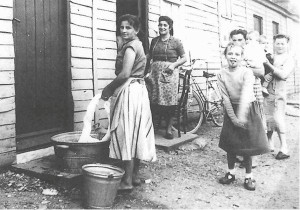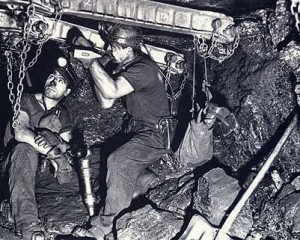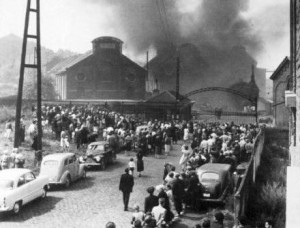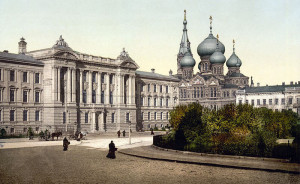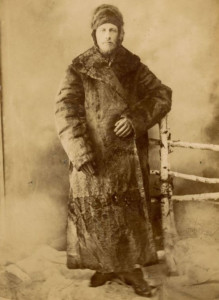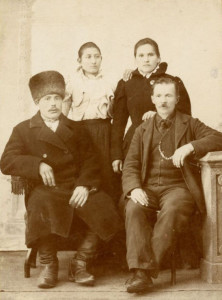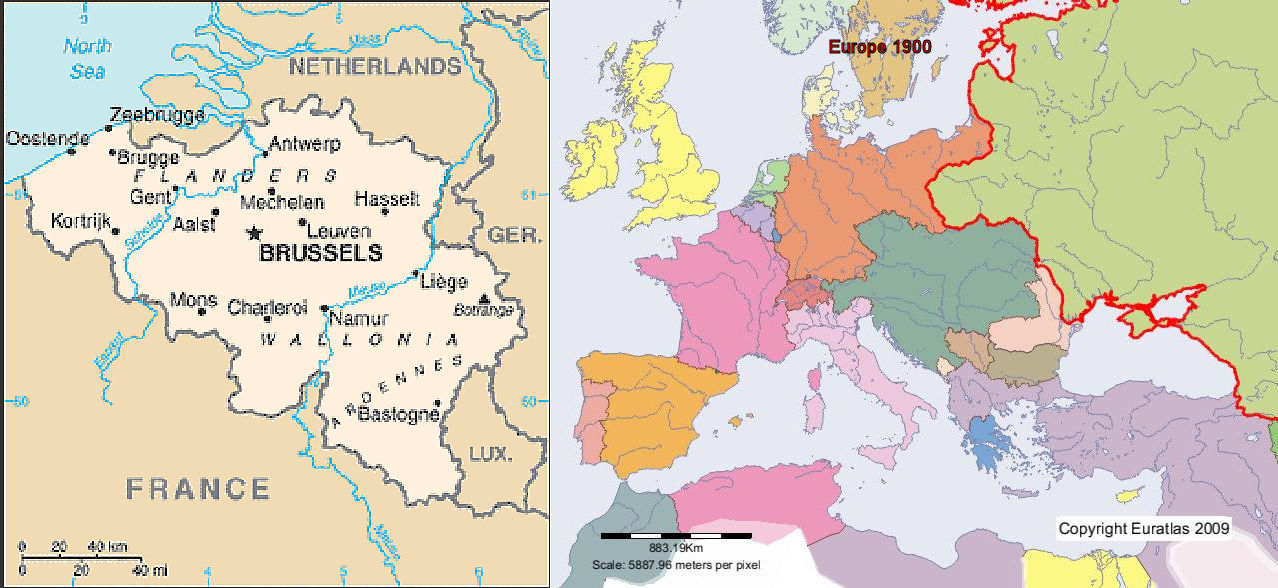
Belgium
By Paolo Calvano
Belgium is an important area of migration for the Italians from both qualitatively as well as a quantitative aspect, because in 1961 our community represented 44% of all migrants, and in 1970 there were 300,000 of our countrymen there. Significant also the commitment which characterised the Italian in this small country with important undertakings in the various aspects of civil life and a participation that favoured the naturalization of foreigners.
In all the development of the twentieth century the two most common categories were the manual workers (in particular the quarry workers and the railway workers) and the political exiles escaped from Italy due to political problems. Having overcome the war discrimination issues in Belgium a substantial colony of Italians established themselves (30,000), working largely in the developing industries and the construction of railway lines. Numerous also the group of political exiles, transferred here in the 20 years of Fascist rule, who having becoming acquainted with a partial integration in Belgian society, with the German invasion suffered the compulsory deportation or took an active part in the resistance movement.
After the end of the war a new emigration chapter began. Following the Italo-Belgian accord in 1946 it was estimated that there would be hundreds of thousand movements, with the prospects of working in the coal mines. With this in mind there was a program to cater for the weekly arrival of 2,000 young men. It was a big business for the Italian economy not only for the acquired coal, which was used for the reconstruction of Italy, but also for the money sent back to Italy and to re-establish work in Italy which was no longer existent. On the other hand there was a heavy price to pay for this obligation, an inhuman work in the underground tunnels, the possibility of silicosis and the tough life conditions in inadequate structures. The initial boarding available was the barracks used by the Nazis for the Russian miners kept almost as slaves. Wooden barracks, with tarred cardboard and corrugated iron. The furnishing of the “homes” were indecent, not fit for human use. This emergency situation, despite the accusations, continues well after 1956, when there were still 2,000 uninhabitable barracks in use.
In the mines from the very beginning there were frequent fatal accidents which amounted to over 1,000 deaths. With the tragedy of Marcinelle (262 deaths of which 136 Italians) the world became aware of this human exploitation and the living and working conditions of the miners. This traumatic incident closed the official migration chapter, but at least for another decade there continued to be autonomous movements and many Italians continue to arrive in this country pushed by need or desperation.
List of Vastesi miners who worked in Belgium 1950-1965
Altieri Cesario, Baccalà Giuseppe, Bevilacqua Achille. Bevilacqua Luigi, Bosco Michele, Bozzelli. Carmine, Bozzelli Domenico, Bozzelli Michele, Cicchini Giuseppe, Cicchini Paolo, Ciccotosto Cesario, Ciccotosto Vincenzo. D’Adamo Giuseppe, D’Addiego Cesario, D’Addiego Pasquale, Del Borrello Michele, Del Borrello Nicola, Del Borrello Nicola II, Del Casale Michele, Di Rosso Leonardo, Di Santo Serafino, Di Tullio Luigi. Farina Antonio, Farina Antonio II, Farina Michele, Florio Michele, Foia Domenico, Forte Antonio. Gentile Giovanni, Giampietro Giuseppe, Giampietro Nicola, Giannone Giovanni, Giannone Giuseppe, Gileno Giovanni. La Palombara Nicola. Maccione Michele, Maranca Giuseppe, Maranca Sante, Marchesani Cesario, Marchesani Enrico, Marchesani Giacinto, Marchese Pasquale, Marinelli, Marinozzi Pasquale, Marrocco Francesco, Molino Angelo, Molino Carmine, Molino Michele, Monteferrante Cesario. Passeretto Vincenzo. Recchiuto Luigi. Sabatino Nicola, Santomoro Angelo, Scarpone Nicola, Scè Giuseppe, Schiavone Antonio, Sel-vaggio Raffaele, Smargiassi Michele, Spatocco Antonio, Sputore Giuseppe, Sputore Giuseppe II, Stivaletta Michele. Zinni Giovanni.
(List compiled by Michele Smargiassi)
Russia
By Paolo Calvano
Numerically its an emigration of a small number. From 2,000 in 1871 it rose to 3,200 in 1893. Their settlement was concentrated in the southern region (2,000 alone in Odessa, the most important port for communications between the Mediterranean and Europe, on the Caucasus (in Batumi in Georgia over 400 countrymen) and in the main cities: there were 500 in St Petersburg and only 60 in Moscow. Between 1900 and 1904 research has suggested another 7,000 arrivals. Many of them involved in occupations not often considered: musicians, street artists, sellers of small chalk statues. On the other hand it is established that, at the beginning of the 19th century, in the great cities there lived traders, artists, and businessmen belonging at the highest levels of society and perfectly integrated into the Russian world. To this permanent presence one needs to add a consistent flow of qualified seasonal workers. The first migrants were sailors and port workers that established themselves in Odessa from the beginning of the 19th century. Following this many Italians worked in the railway lines and various infrastructures, going as far as Lake Baikal and the port of Taganrog (here about a group of 100 settled) as workers, marble worker, bricklayers and stone cutters. Within the country at the same time there continued to grow trades traditionally attributed in the arts, theatre entrepreneurs and musicians.
With the outbreak of the Great War, and the Bolshevik Revolution then, this world was swept away and its documented that around 3,000 people and families went back to Italy who, abandoning Russia, lost completely their properties and wealth. Some thousands that, despite everything, remained, perhaps because they married Russians, or too old, or because could not return to Italy, and faced many dramatic situations.
From the 1920s with the establishment of the proletarian dictatorship in the USSR and the dictatorships in Europe, there was a flow from the Western Europe to Russia: also for the Italians there was a political migration, by exponents of the Marxist philosophy, with contradictory consequences often ending in tragedy. Deluded by the Soviet propaganda and pressures from their leaders many young anti Fascists went to Moscow with the hope of contributing personally to the building of a new world. From the 1930s with the isolation policy of the country and the beginning of the repressions by Stalin, the situation changed for these migrants, whose numbers have been estimated at about 4,000. On the basis of the purging lists compiled by leaders of western parties, there were arrests, executions and deportations that went on till 1944. So communist militants, socialists and anarchists end up deported in the Siberian lager and the endless soviet province where they try to make even the memory of their existence disappear.

